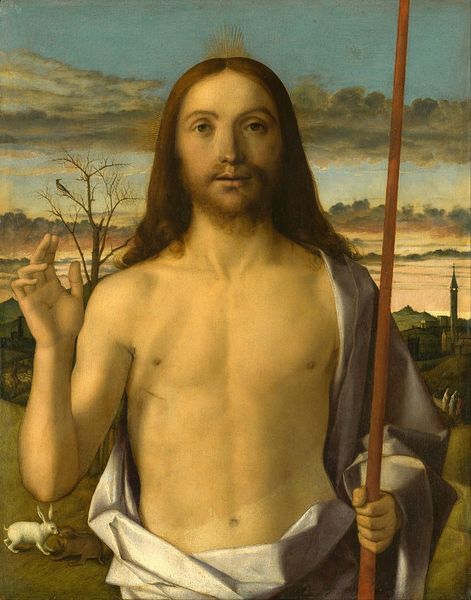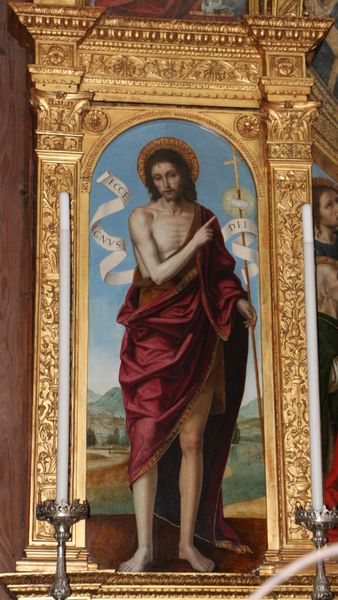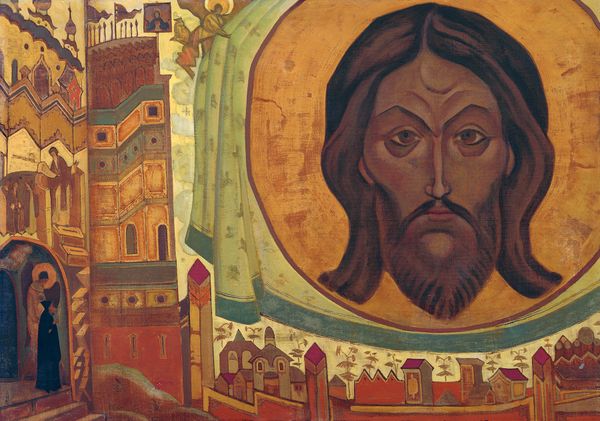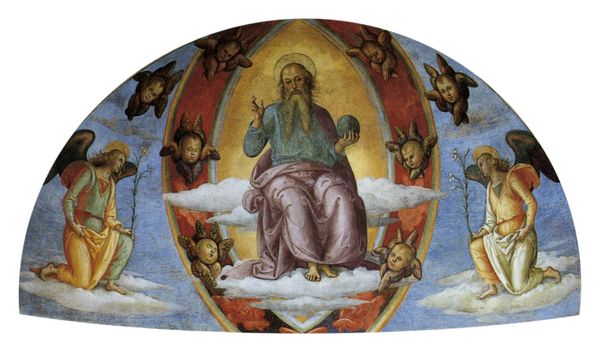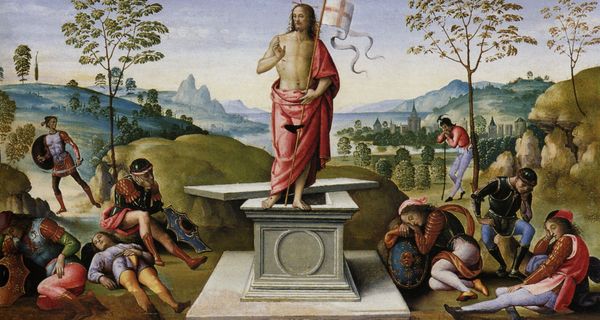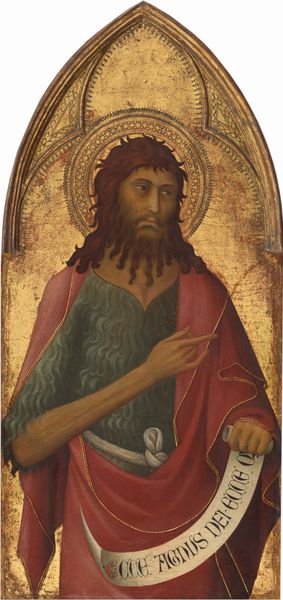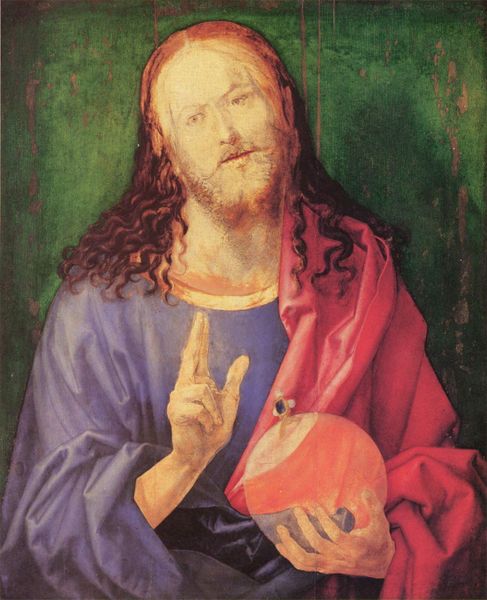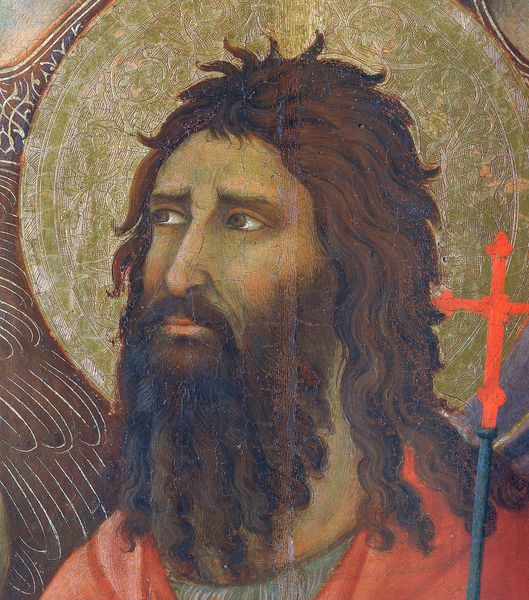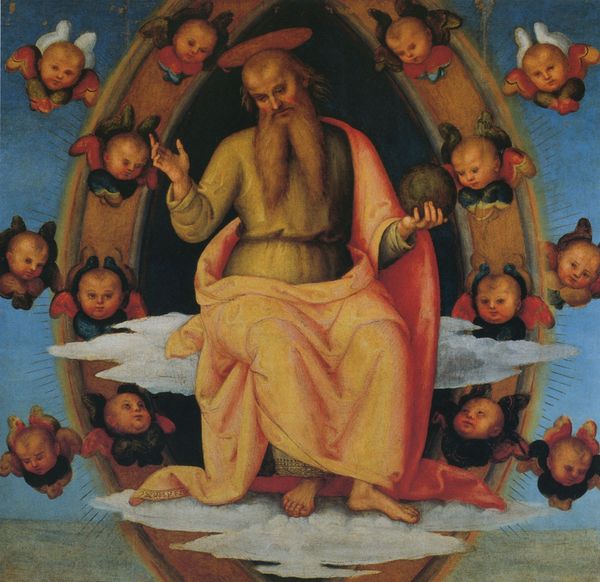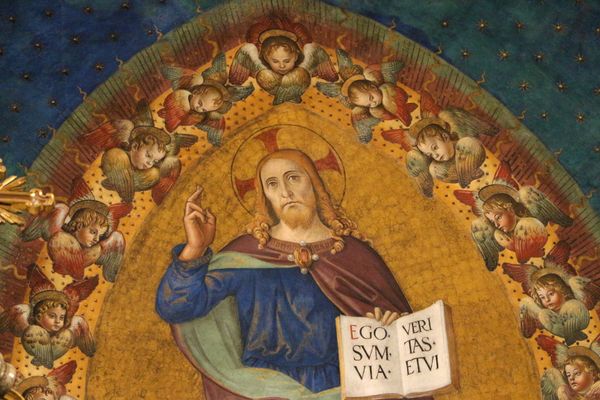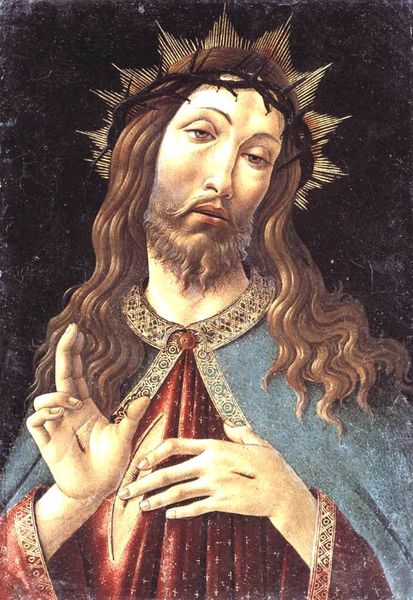
Copyright: Ernst Fuchs,Fair Use
Editor: Ernst Fuchs' "Christ" from 1965 is striking. The mixed media approach creates an almost dreamlike quality, but with a definite purpose. There are so many layers here—how do you even begin to unpack all of these symbols? Curator: You're right, it’s dense. Notice how Fuchs places Christ within this landscape brimming with potent, almost archetypal, symbolism. The crown hovering above, for instance; is it an imperial crown, rather than a thorny one? And what does it signify to see angels presenting it, yet a chalice rests near Christ's side? Consider also the almost classical landscape in the background contrasted to more tortured elements. What tension does that evoke for you? Editor: That's interesting - the crown, presented by angels, juxtaposed with the chalice suggesting sacrifice. There is a visual paradox happening between the promise of heavenly authority, alongside a symbol of earthly suffering. Curator: Precisely. Think of how symbols evolve, how the same image can carry different emotional and cultural resonance across eras. Fuchs layers these references deliberately. The juxtaposition reveals not only theological complexity, but maybe the paradoxes inherent in belief itself. Do you notice anything about how Fuchs renders Christ’s wounds in relationship to this overt display of icons and totems? Editor: The wounds are subtly represented by what looks like jewels holding the shroud. It's not gory or overt, yet the presence is clear. The artist seems to deliberately move away from directly referencing trauma. The jewels are there - but there is no blood. I guess, as an artist he is less concerned with depicting the actuality of an execution but more concerned with symbolism? Curator: Absolutely! Fuchs gives us not a literal depiction, but a symbolic encoding, asking us to consider the transformation, the metamorphosis of suffering into something else… a memory and cultural imprint so immense that the individual pain becomes almost abstracted. A fascinating perspective. Editor: That makes the piece click into place. Looking at "Christ," with this view in mind, unlocks so many symbolic relationships - the piece really is about enduring cultural memory and visual representation over a more literal representation of religious stories. Thank you.
Comments
No comments
Be the first to comment and join the conversation on the ultimate creative platform.


